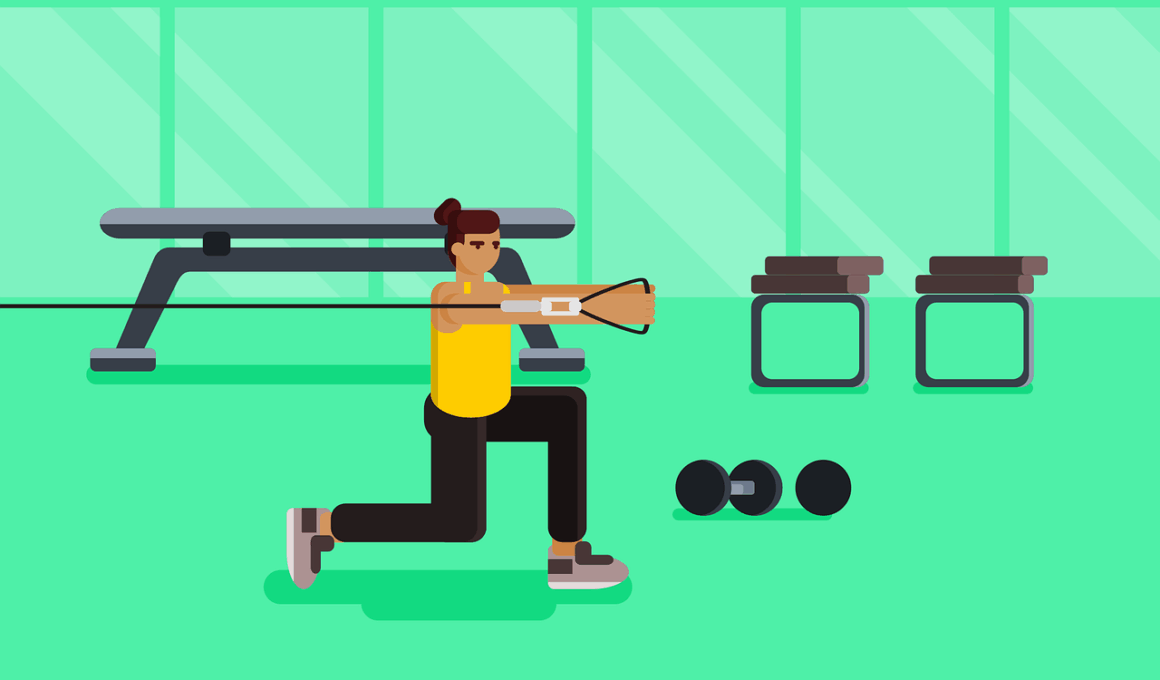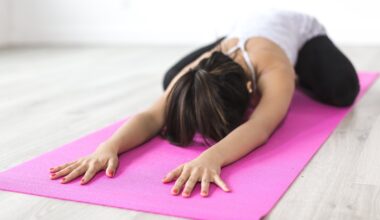Top 10 Communication Practices for Gym Etiquette
Effective communication within the gym setting is vital in ensuring a productive and pleasant atmosphere for everyone. Fundamental gestures, like saying “hello” or offering a polite nod to fellow gym-goers, contribute to building a welcoming environment. When sharing equipment, it’s crucial to communicate your intent clearly. For example, saying, “Are you using this next?” prevents misunderstandings. Furthermore, offering tips or advice should always be done with respect and tact, ensuring that the recipient is open to feedback. Avoid interrupting those who are focused, especially during intense workouts, as this can lead to distraction and frustration. Additionally, utilizing your phone correctly is paramount; keep conversations brief and at a distance from others. If someone appears busy, it’s polite to wait your turn rather than encroach on their space. Enthusiastic praise can enhance a sense of community. Complimenting someone’s effort can motivate them, fostering connections. By implementing these small gestures and practices, gym etiquette can significantly enhance everyone’s experience, allowing us all to achieve our fitness goals in harmony and respect.
Being mindful of your surroundings is another essential component of effective communication in the gym. Always be aware of who might be nearby when adjusting equipment or performing exercises. Accidental collisions can occur if individuals lack awareness, so taking a moment to check your environment can prevent these mishaps. When looking to engage in conversation, tact and the environment are crucial. Some individuals prefer to focus; hence, engaging them in a discussion while they’re mid-set may disrupt their concentration. If you do catch someone in a less intense moment, approach them with a friendly smile, and start with casual topics. Avoid complex discussions, as they may not be suitable for a workout environment. Another crucial aspect is making eye contact when speaking to someone; this demonstrates interest and respect. Listening actively is equally important, so ensure you provide verbal or non-verbal feedback while someone is speaking. All these methods contribute to creating a communal atmosphere within the gym space where everyone feels valued. Consequently, this promotes everyone’s fitness journey and experiences in a supportive way.
Respect Personal Space
Respecting personal space is crucial for effective communication and etiquette in the gym. Each individual has their comfort zone, and invading it can lead to discomfort or anxiety. Maintaining a reasonable distance when conversing is essential. Ideally, you should allow 3 to 5 feet between you and another person during discussions, as this fosters a feeling of safety. This practice also applies when using gym equipment; ensure you avoid crowding others as it may hinder their focus and performance. When waiting to use equipment, stand clear and allow the current user to complete their set without feeling rushed. Additionally, if you’re a personal trainer or experienced gym-goer offering advice, always ask if someone would like help before intruding on their routine. Practicing these boundaries, including non-verbal cues such as nodding or stepping back during transitions, helps in recognizing others’ space and comfort. Each individual’s gym experience improves when personal boundaries are adhered to diligently. The ultimate goal is to create a nurturing gym culture where everyone can work towards their fitness aspirations while feeling at ease and respected.
Engaging in group activities, such as classes or team workouts, can offer great opportunities to enhance communication within the gym. In group settings, ensure that everyone feels included, and make a conscious effort to introduce yourself to newcomers. A simple “Hi, I’m [Your Name]” can go a long way in establishing a friendly atmosphere. When participating in group classes, maintain respectful communication with the instructor by following their directions and participating actively. Acknowledge the instructor’s guidance positively, like nodding or responding to instructions with enthusiasm, as it boosts the group’s morale. Moreover, if you’re comfortable, feel free to participate in group discussions or share personal fitness tips after class; always be conscious of the group dynamic. This not only helps you forge new friendships, but it also strengthens the sense of fellowship among participants. Remember, facilitating an environment where everyone can express themselves and contribute will enhance collective motivation. By expressing positivity and inclusion, communication flourishes, encouraging collaboration among members as they embark on their respective fitness journeys.
Clear Verbal Communication
Clear verbal communication fosters smooth interactions in a gym environment. This means being concise and direct when speaking to others, particularly regarding requests or instructions. For instance, if you want to borrow a weight, kindly say, “Excuse me, could I use that after you?” instead of assuming. Such clarity prevents misunderstandings and helps maintain a friendly atmosphere. Tone and body language are also vital; using a friendly tone and approachable demeanor invites open communication. If you feel uncomfortable expressing a need or request, address how you would like to be approached. Using phrases like, “I appreciate your help, but I prefer to work alone today” can bridge gaps without causing any tension. Moreover, encouraging open dialogue creates a more inclusive environment. If someone shares their expertise or offers advice, show appreciation through affirmations like, “Thank you, that’s helpful!” This reinforces positive exchanges. Practicing clear verbal communication can transform interactions into memorable experiences, turning every visit to the gym into an opportunity for personal connection and growth without frustration or misunderstanding.
Non-verbal communication is another essential aspect of gym etiquette that can profoundly impact the overall atmosphere. This includes gestures, facial expressions, and body language that can convey messages without words. When you walk into the gym, a smile or friendly nod can signal your openness to interaction, enhancing relationships instantly. Ensure to be aware of your posture; crossing arms or appearing distracted might give off an unapproachable vibe. Instead, maintain an open stance to invite conversations and interactions. Eye contact is also a critical factor; it shows engagement in discussions and demonstrates respect for the person speaking. When taking a break, friendly gestures, like a thumbs-up or an encouraging clap for someone succeeding, fosters community spirit. This collective encouragement inspires others and creates a motivating environment. On the contrary, behaviors like rolling eyes or showing impatience can negatively influence the gym vibe. Always practice positivity in your body language to promote a constructive atmosphere around you. The combination of these non-verbal cues can significantly enhance the energy among users, making the gym a more enjoyable place for everyone.
Closing Thoughts
In conclusion, practicing effective communication in the gym is fundamental for fostering a positive and respectful atmosphere. Adopting clear verbal and non-verbal communication techniques helps build lasting connections and creates a supportive community. Small gestures, such as greetings or compliments, pave the way for a more welcoming environment and encourage healthy interactions among gym-goers. Additionally, being mindful of personal space is crucial; it helps maintain comfort and focus for everyone involved. Respectful engagement in group settings can facilitate friendships and create bonds that motivate attendees toward their fitness goals. For trainers and members alike, leveraging these practices harmonizes interactions and nurtures a culture built on mutual respect. Each effort contributes significantly to overall satisfaction while sharing the space with others. By implementing these essential communication practices in your everyday routines, you can create a gym culture that is friendly, equitable, and conducive to everyone’s fitness journey. With mutual respect and open interaction, the gym can become a place where people genuinely support one another, making the journey toward health and fitness that much more enjoyable.


